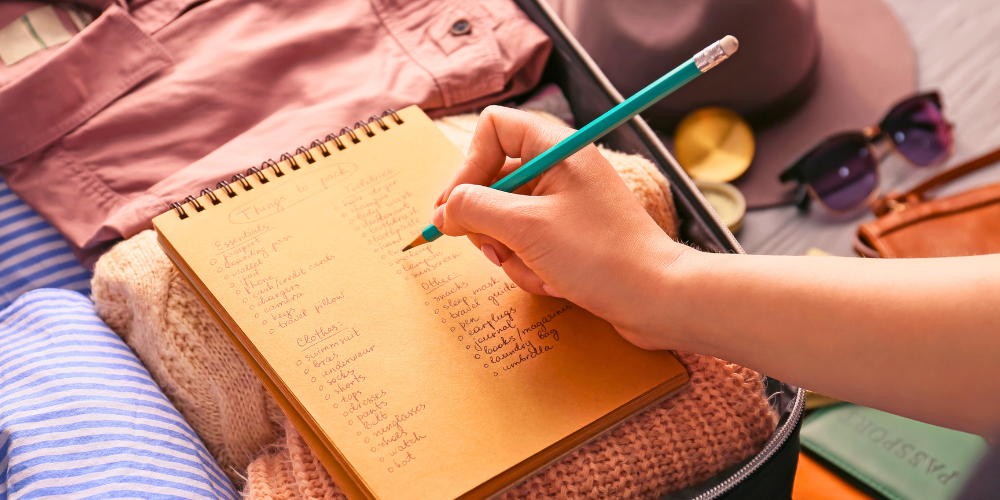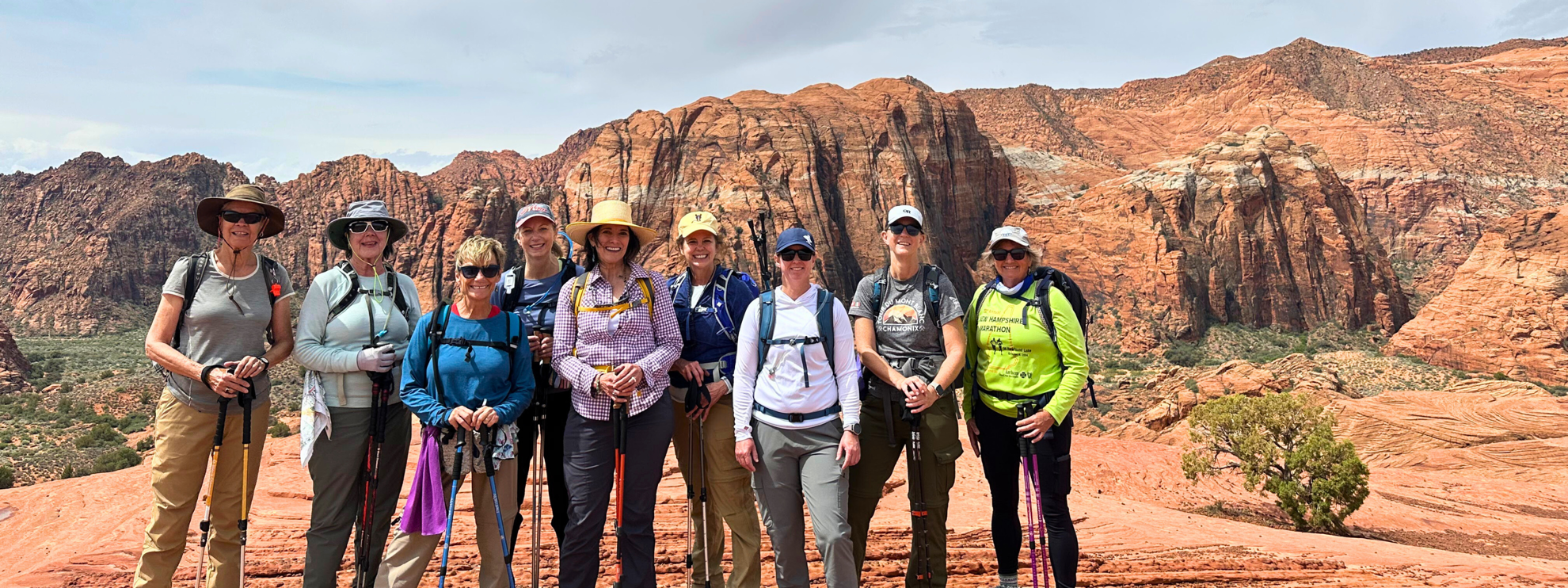A successful multi-day hiking trip in Utah requires careful planning and the right gear. It's essential to strike a balance between packing light and carrying all the necessities to prepare for changing weather, potential injuries, and optimal trail conditions.
Utah is home to the Mighty Five National Parks: Zion, Bryce Canyon, Arches, Capitol Reef, and Canyonlands. Each park offers a unique hiking experience, from exploring Zion’s towering slot canyons to trekking among the otherworldly hoodoos of Bryce Canyon.
Whether you're hiking in the shadows of Zion’s canyon walls, watching the sunrise over Bryce’s hoodoos, or navigating the winding trails of Capitol Reef, each of Utah’s Mighty Five parks offers a unique experience. Our AGC trips are designed to showcase the best of each landscape—while providing good company and expert guidance along the way.

Adventures in Good Company’s Utah National Park Hiking Trips:
-
Hiking Utah’s Majestic Parks (8 Days; Level 3) — A deep dive into Arches, Canyonlands, and Capitol Reef
-
Hiking Bryce and Zion National Parks (5 Days; Level 4) — Slot canyons, hoodoos, and epic views
-
Hiking the Grand Staircase (8 Days; Level 4) — A backcountry exploration through one of Utah’s most remote and surreal regions
What to Expect on These AGC Trips
Activity Level & Elevation
Level 3 and 4 hiking trips in Utah are designed for those in good health with strong balance and mobility, as well as individuals who exercise regularly and can prepare for physically demanding adventures. AGC’s Utah hikes range from 3 to 8 miles per day, lasting 3 to 6 hours, with elevation gains and losses of up to 2,000 feet or more. Some routes begin at high elevations, reaching over 7,500 feet.
Weather
In Utah's national parks, spring (March–May) brings mild temperatures, blooming wildflowers, and variable weather. Daytime highs range from 60–80°F, while nights can be cool, sometimes dropping below freezing, especially in higher elevations. Occasional rain showers and strong winds are common. In fall (September–November), temperatures gradually cool from 80s°F in early September to 50s°F by November. The weather is generally dry and stable, with crisp mornings and pleasant afternoons. Fall foliage adds to the scenic beauty, especially in higher elevations like Bryce Canyon.
Terrain
Utah’s national park hiking trails feature diverse terrain, including slickrock and sandstone ridges in Arches and Canyonlands, narrow slot canyons in Zion, and sandy paths in Capitol Reef. Trails range from rugged desert and boulder-strewn routes to high alpine terrain in Bryce Canyon, where snow is common. Some hikes, like The Narrows, require river crossings, while others traverse dry washes and exposed ridgelines, demanding careful footing and preparation.

What to Pack for Utah’s National Parks
Footwear
Your hiking boots or shoes will be your primary footwear throughout your Utah adventure, making it essential that they fit well, provide comfort, and are properly broken in. Both options offer superior grip and traction compared to walking shoes, making them better suited for trails with loose gravel, mud, rocks, and uneven terrain. The key difference lies in support and breathability. Hiking boots provide more ankle support, while hiking shoes offer better ventilation. Regardless of your choice, they should be waterproof or quick-drying to handle wet trail conditions effectively.
Other Recommended Footwear:
Clothing
When possible, opt for light-colored clothing. Lighter colors reflect sunlight, helping to keep you cooler during sunny hikes, while darker colors absorb heat. Avoid cotton, as it absorbs sweat and takes longer to dry, leaving you cold and uncomfortable. Instead, choose nylon or synthetic materials, which regulate body temperature better in both hot and cooler weather. Merino wool is also a great option for its moisture-wicking properties and ability to retain warmth even when wet. A proper layering system is essential with Utah’s varying desert climates and it will ensure comfort and adaptability with changing conditions.
Recommended Clothing:
-
Fleece Jacket, Down Jacket, or Vest
-
Underwear and Sleepwear
-
Wool or Fleece Hat (or Buff)

Equipment and Essentials
Trekking Poles
Aside from improving overall stability, Trekking poles reduce the stress hiking puts on your knees and joints, especially on downhill terrain. They enhance balance on uneven surfaces, support your upper body, and help improve posture and endurance. Use rubber tips for better grip on slickrock and to minimize environmental impact on Utah’s delicate desert surfaces.
Daypacks
Choose a 24–30 Liter daypack with enough space for 3 Liters of water and essentials. Consider a pack cover or plastic bag to keep contents dry in variable weather.
Hydration
Hydration reservoirs make it easy to drink without stopping and help keep your energy up. Also bring a separate water bottle for hydration during non-hiking hours.
Other Essentials:
-
Cell Phone and Charger
-
Plastic or Silicone Lunch Container and Spork

Toiletries
First Aid
Bring a small kit with blister remedies, pain relief meds, and any personal medications. AGC guides carry first aid kits, but having your own helps with minor injuries when help isn't nearby.
Other Toiletries:
-
Shampoo, Conditioner and Soap
-
Personal Items and Medications
Optional Packing Items
-
Camera & Batteries
-
Wristwatch or Travel Alarm Clock
-
Book/Journal and Pen
-
Extra Snacks and Electrolytes

By packing the right gear, you'll be prepared to explore Utah’s stunning landscapes, which feature some of the most unique rock formations and diverse terrains in the world. Be sure to check out the specific packing lists for each of Adventures in Good Company’s Utah hiking trips below:
Also make sure to check out AGC’s Adventure Gear Guide for more recommendations.
Ready to take the trail with us? Whether you’re drawn to the wonders of Bryce and Zion, the wild beauty of Capitol Reef, or the dramatic arches of Moab, our Utah trips offer stunning landscapes—and even better company.





